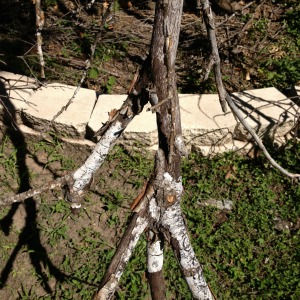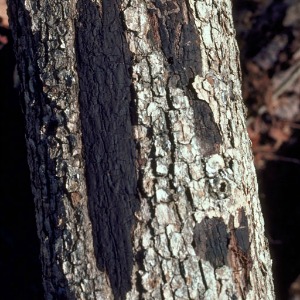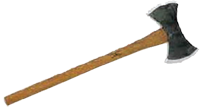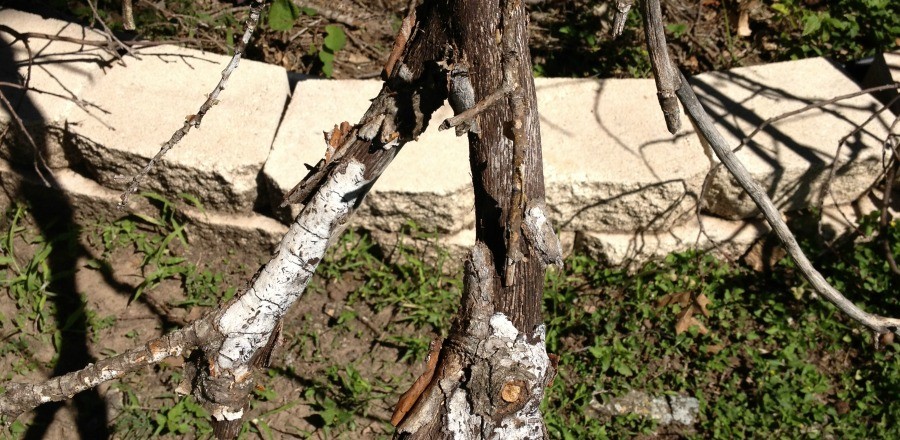As a home owner you may have noticed your trees looking dry, sick or discolored. Upon a closer inspection you may have also noticed branches that do not have leaves or have small or discolored leaves. Eventually, the bark over the affected areas on the trunk and large branches will drop off, revealing a distinctive fungal tissue known as stroma. Stroma is most commonly battleship gray in color, and relatively smooth, with a paintlike appearance. Stroma may also be black or tan-brown. Small black fungal fruiting bodies may be visible on the surface of the stroma. So what is it that is causing these symptoms and slowly killing trees in Central Texas?
Answer: Hypoxylon Canker.
(yes, I know that’s a mouthful )
 Hypoxylon Canker is caused by a fungus called Biscogniauxia (Hypoxylon) atropunctatum. This fungus only attacks trees under stress, not healthy trees. Specifically, this fungus can infect any kind of oak tree. The canker appears as dead lesions on bark, limbs and branches of infected trees. These cankers develop under the bark as a black rot that eventually causes a white rot decay of the tree’s sapwood. This disease not only causes tree death, but it makes the tree structurally unsound; meaning it becomes a hazard tree that can be dangerous to your home and family.
Hypoxylon Canker is caused by a fungus called Biscogniauxia (Hypoxylon) atropunctatum. This fungus only attacks trees under stress, not healthy trees. Specifically, this fungus can infect any kind of oak tree. The canker appears as dead lesions on bark, limbs and branches of infected trees. These cankers develop under the bark as a black rot that eventually causes a white rot decay of the tree’s sapwood. This disease not only causes tree death, but it makes the tree structurally unsound; meaning it becomes a hazard tree that can be dangerous to your home and family.
There are no effective means of managing a significant infection of Hypoxylon Canker. Removing dead and weak limbs, as well as maintaining overall health and vigor, will be the most effective way to reduce the incidence of Hypoxylon Canker on your trees. To avoid Hypoxylon Canker from becoming a significant inhabitant of your trees consider consulting with a certified arborist and implementing the following preventive practices.

- Maintain and improve the overall health and vigor of your trees with regular and ongoing deep root nutrient uptake. More aggressive programs may be required to help rehabilitate stressed or damaged trees.
- Regularly prune your trees to eliminate any weak, dying, or dead limbs.
- Avoid injury to the trunk and limbs of any tree. By reducing injuries, the trees are healthier and the chances of infection are reduced.
- Avoid reductions or additions of soil in a tree’s root zone, especially up against the main trunk of the tree. This will keep the bark tissue from breaking down, reducing entry wounds from developing.
- Water trees deeply & consistently in times of rainfall shortage.
- Remove any trees that have been in steady decline and have become hazardous.
Consider your trees & these factors as we prepare for the onslaught of summer here in Central Texas.

